I did a small benchmark test to compare Couchbase (running in Win) with Redis and MySql (EDIT: added Aerospike to test)
We are inserting 100 000 JSON "documents" into three db/stores:
- Redis (just insert, there is nothing else)
- Couchbase (in-memory Ephemeral buckets, JSON Index on JobId)
- MySql (Simple table; Id (int), Data (MediumText), index on Id)
- Aerospike (in-memory storage)
The JSON file is 67 lines, about 1800 bytes.
INSERT:
- Couchbase: 60-100 seconds (EDIT: seems to vary quite a bit!)
- MySql: 30 seconds
- Redis: 8 seconds
- Aerospike: 71 seconds
READ: We are reading 1000 times, and we do this 10 times and look at averages.
- Couchbase: 600-700 ms for 1000 GETs (Using KeyValue operations, not Query API. Using Query API, this takes about 1500 ms)
- MySql: 90-100 ms for 1000 GETs
- Redis: 50-60 ms for 1000 GETs
- Aerospike: 750 ms for 1000 GETs
Conclusion: Couchbase seems slowest (the INSERT times varies a lot it seems), Aerospike is also very slow. Both of these are using in-memory storage (Couchbase => Ephemeral bucket, Aerospike => storage-engine memory).
Question: Why the in-memory write and read on Couchbase so slow, even slower than using normal MySQL (on an SSD)?
CODE
Note: Using Task.WhenAll, or awaiting each call, doesn't make a difference.
INSERT
Couchbase:
IBucket bucket = await cluster.BucketAsync("halo"); // <-- ephemeral
IScope scope = bucket.Scope("myScope");
var collection = scope.Collection("myCollection");
// EDIT: Added this to avoid measuring lazy loading:
JObject t = JObject.FromObject(_baseJsonObject);
t["JobId"] = 0;
t["CustomerName"] = $"{firstnames[rand.Next(0, firstnames.Count - 1)]} {lastnames[rand.Next(0, lastnames.Count - 1)]}";
await collection.InsertAsync("0", t);
await collection.RemoveAsync("0");
List<Task> inserTasks = new List<Task>();
sw.Start();
foreach (JObject temp in jsonObjects) // jsonObjects is pre-created so its not a factor in the test
{
inserTasks.Add(collection.InsertAsync(temp.GetValue("JobId").ToString(), temp));
}
await Task.WhenAll(inserTasks);
sw.Stop();
Console.WriteLine($"Adding {nbr} to Couchbase took {sw.ElapsedMilliseconds} ms");
Redis (using ServiceStack!)
sw.Restart();
using (var client = redisManager.GetClient())
{
foreach (JObject temp in jsonObjects)
{
client.Set($"jobId:{temp.GetValue("JobId")}", temp.ToString());
}
}
sw.Stop();
Console.WriteLine($"Adding {nbr} to Redis took {sw.ElapsedMilliseconds} ms");
sw.Reset();
Mysql:
MySql.Data.MySqlClient.MySqlConnection mySqlConnection = new MySql.Data.MySqlClient.MySqlConnection("Server=localhost;Database=test;port=3306;User Id=root;password=root;");
mySqlConnection.Open();
sw.Restart();
foreach (JObject temp in jsonObjects)
{
MySql.Data.MySqlClient.MySqlCommand cmd = new MySql.Data.MySqlClient.MySqlCommand($"INSERT INTO test (id, data) VALUES ('{temp.GetValue("JobId")}', @data)", mySqlConnection);
cmd.Parameters.AddWithValue("@data", temp.ToString());
cmd.ExecuteNonQuery();
}
sw.Stop();
Console.WriteLine($"Adding {nbr} to MySql took {sw.ElapsedMilliseconds} ms");
sw.Reset();
READ
Couchbase:
IBucket bucket = await cluster.BucketAsync("halo");
IScope scope = bucket.Scope("myScope");
var collection = scope.Collection("myCollection");
Stopwatch sw = Stopwatch.StartNew();
for (int i = 0; i < 1000; i++)
{
string key = $"{r.Next(1, 100000)}";
var result = await collection.GetAsync(key);
}
sw.Stop();
Console.WriteLine($"Couchbase Q: {q}\t{sw.ElapsedMilliseconds}");
Redis:
Stopwatch sw = Stopwatch.StartNew();
using (var client = redisManager.GetClient())
{
for (int i = 0; i < nbr; i++)
{
client.Get<string>($"jobId:{r.Next(1, 100000)}");
}
}
sw.Stop();
Console.WriteLine($"Redis Q: {q}\t{sw.ElapsedMilliseconds}");
MySQL:
MySqlConnection mySqlConnection = new MySql.Data.MySqlClient.MySqlConnection("Server=localhost;Database=test;port=3306;User Id=root;password=root;");
mySqlConnection.Open();
Stopwatch sw = Stopwatch.StartNew();
for (int i = 0; i < nbr; i++)
{
MySqlCommand cmd = new MySql.Data.MySqlClient.MySqlCommand($"SELECT data FROM test WHERE Id='{r.Next(1, 100000)}'", mySqlConnection);
using MySqlDataReader rdr = cmd.ExecuteReader();
while (rdr.Read())
{
}
}
sw.Stop();
Console.WriteLine($"MySql Q: {q} \t{sw.ElapsedMilliseconds} ms");
sw.Reset();
Couchbase setup:
and
and Bucket Durability:
I only have 1 Node (no cluster), it's local on my machine, running Ryzen 3900x 12 cores, M.2 SSD, Win10, 32 GB RAM.
If you made it this far, here is a GitHub repo with my benchmark code: https://github.com/tedekeroth/CouchbaseTests


